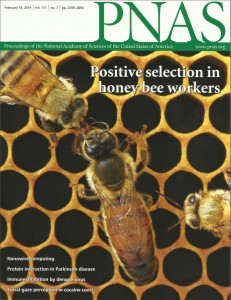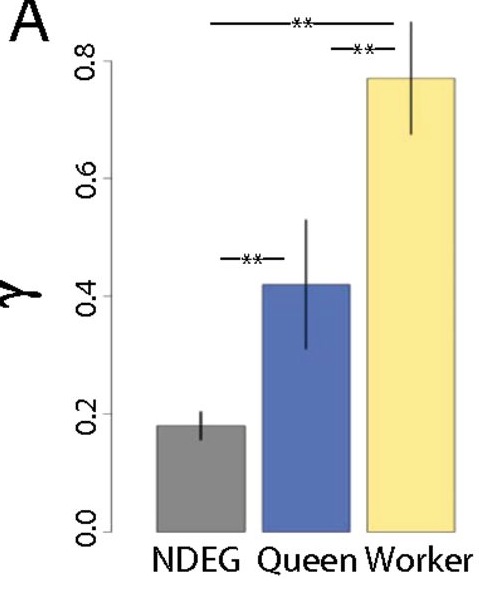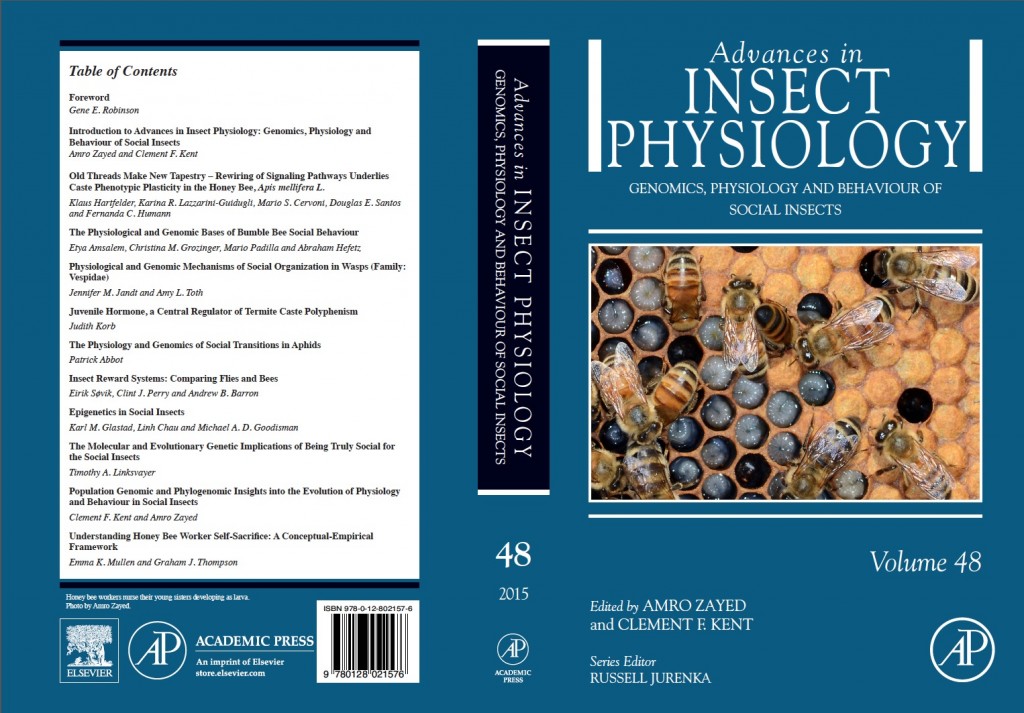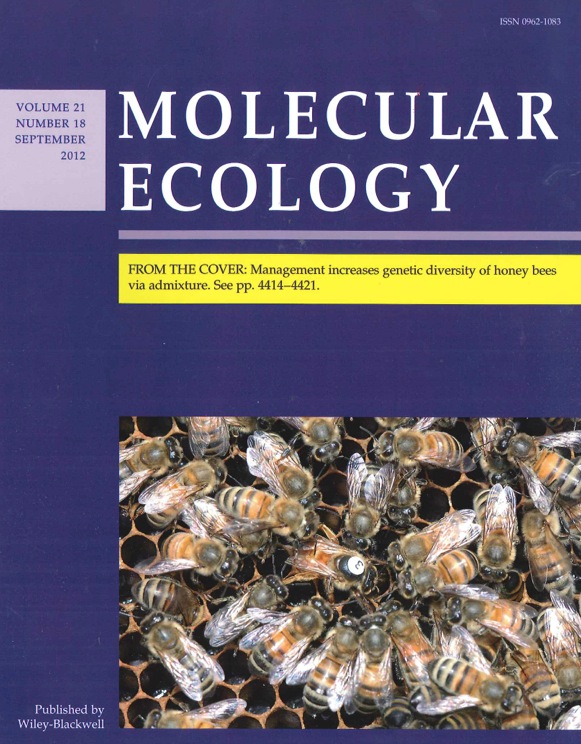Hi All,
 I am very happy to announce the publication of a new paper from the lab, which appeared last week in the Proceedings of the National Academy of Sciences (PNAS) – a top journal in the field. The study was featured on the cover of PNAS, and received a highlight in the “In This Issue” section of the journal. Also see York U’s press release on the article.
I am very happy to announce the publication of a new paper from the lab, which appeared last week in the Proceedings of the National Academy of Sciences (PNAS) – a top journal in the field. The study was featured on the cover of PNAS, and received a highlight in the “In This Issue” section of the journal. Also see York U’s press release on the article.
The article was co-first authored by PhD Candidate Brock Harpur and postdoctoral fellow Dr. Clement Kent, with further contributions from MSc candidate Daria Molodostova, former Research at York undergraduate Jonathan Lebon, and two collaborators from King Saud University, Drs. Abdualziz Alqarni and Ayman Owayss.
The study involved sequencing the genomes of 39 European honey bees (Apis mellifera) from their native range in Africa, Asia, and Europe. We also sequenced the genome of the Asiatic honey bee Apis cerana. We were able to identify over 12 million mutations in the European honey bee and this allowed us to identify DNA regions that have experienced positive ‘Darwinian’ selection. Positive selection refers to the evolutionary process that increase the frequency of beneficial mutations in a population, because such mutations confer an advantage to the individuals carrying them (e.g. such individuals can survive better, or reproduce more relative to others in the population).
Studying selection in social insects is not straight forward because worker honey bees are effectively sterile – they do not have offspring of their own, so they can only experience positive selection indirectly; mutations that affect a worker’s helping behaviour can only spread through the population if the helping behaviour allows their mother queen to produce more queens and drones (reproductive male bees); this is called kin-selection. We set out to look for evidence of kin selection by searching for signs of positive selection on genes and proteins that affect worker traits. We find very strong evidence that genes associated with worker behaviour experience high rates of positive selection. These included Royal Jelly proteins, which are produced in specialized worker glands to feed their sisters. Indeed, the gene for royalactin, the royal jelly that workers feed to young larva to make them queens, shows very high rates of positive selection.
We also found that worker biased proteins (i.e. proteins that are expressed at higher levels in workers relative to queens) experience stronger positive selection than queen-biased proteins.

The y-axis here is Y, a measure of the strength of selection (positive values indicate positive selection). We found that worker biased proteins have higher levels of selection relative to queen biased proteins, as well as proteins that are not differentially expressed between queens and workers (NDEG). Figure reproduced from our PNAS paper
Our study shows that workers, through their helping behaviour, play a major role in environmental adaptation in the honey bee. In other words, ‘survival of the fittest’ in honey bees is essentially survival of the colonies with the best workers!
Cheers,
Amro



